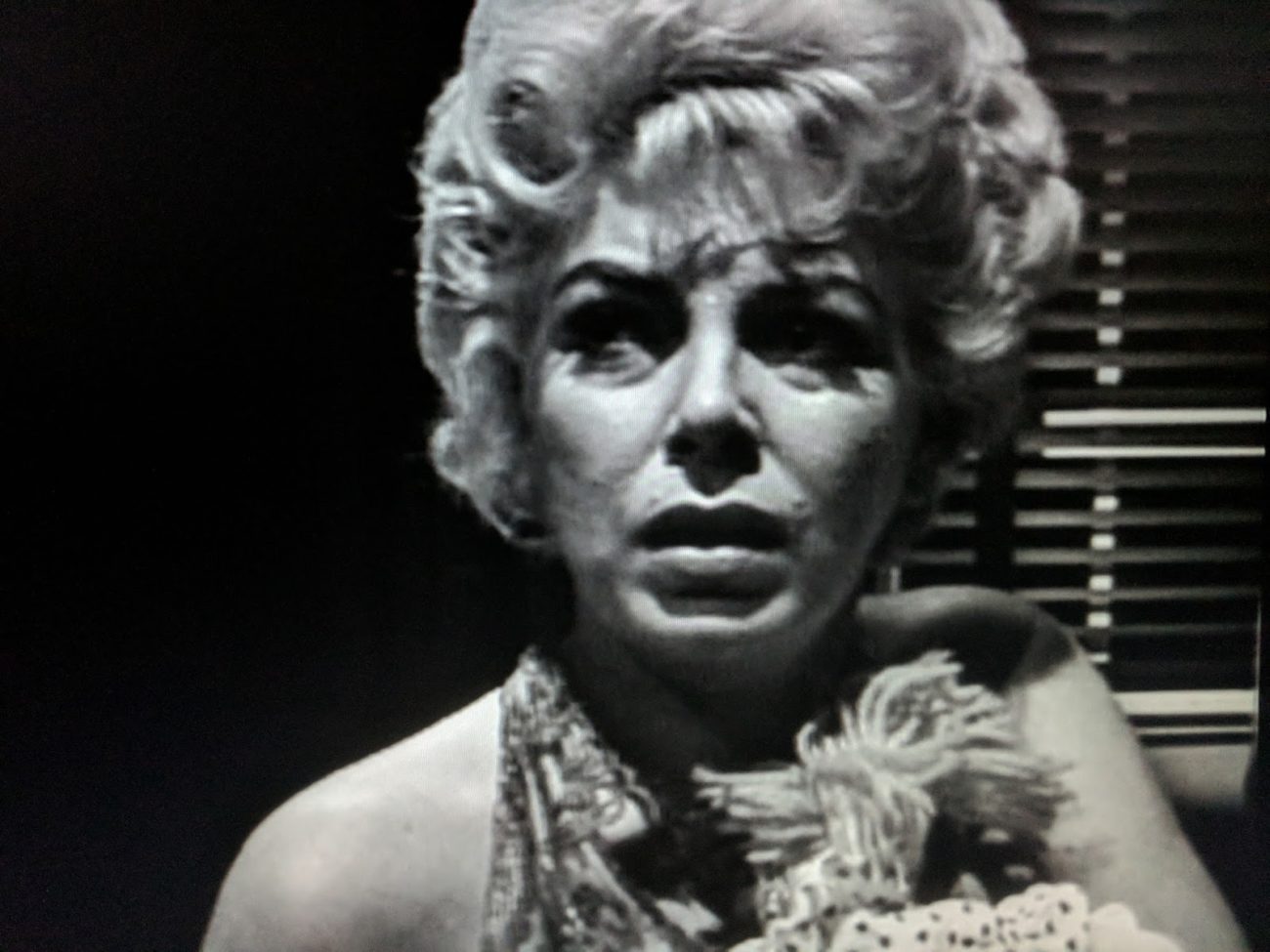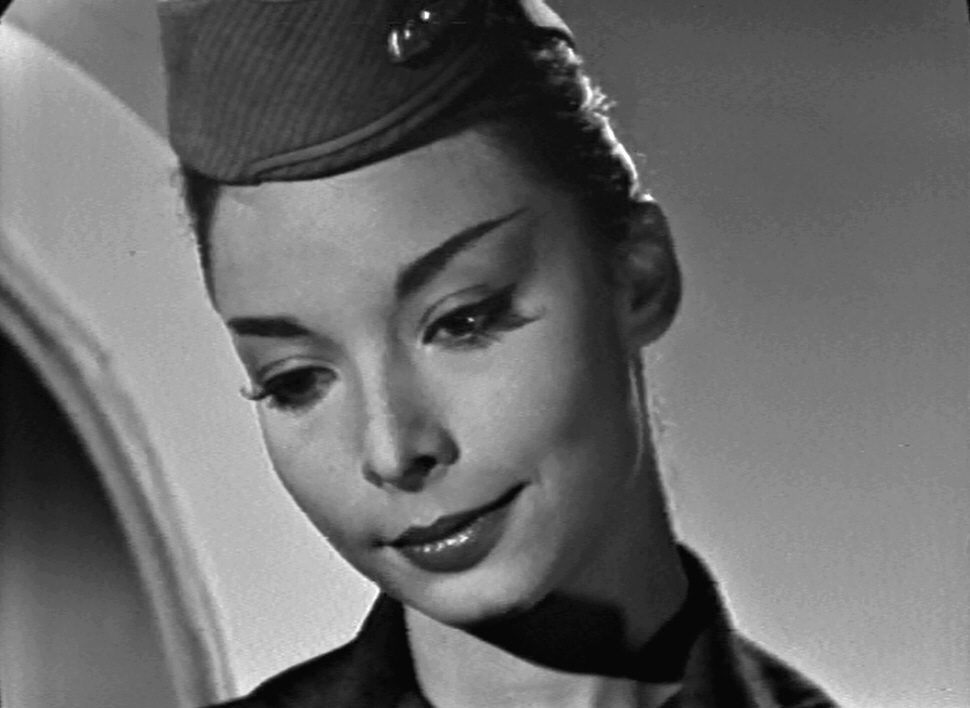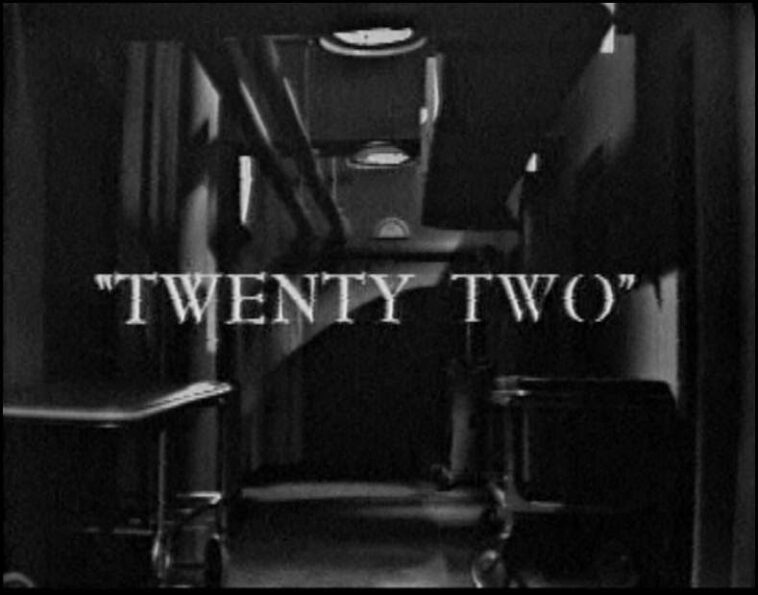Near the start of The Twilight Zone‘s second season, after CBS had informed the production team that they were well over budget, it was decided that six episodes of the show would be shot on videotape in a matter similar to that of a live drama, then later transferred onto 16mm film for future syndication. While the experiment was deemed a failure—the episodes wound up looking like cheap soap operas and only saved about $30,000 in total—the result was a unique chapter in The Twilight Zone‘s history with a couple of memorable episodes, including a personal favorite of mine, called “Twenty Two.”
The Twilight Zone was a show of many faces, shifting on a week-by-week basis from science fiction to horror to something in between—with an occasional detour into fantasy and even comedy at times. “Twenty Two” is pure horror, following a professional dancer suffering from a vivid, recurring nightmare after being hospitalized for exhaustion.
We first meet Liz Powell at the beginning of one of her nightmares, seemingly awoken from sleep by the ominous ticking of a clock. Thirsty, she reaches for a glass of water, only for it to fall from her bedside stand and shatter on the floor. Then, she follows the sounds of footsteps out of her room into the hall to see a nurse get on the elevator down to the hospital’s basement, her face hidden in shadows. Following the nurse down to the basement, Liz finds herself drawn to room 22—the hospital morgue—from which the nurse she’d been following emerges and ominously says “room for one more, honey,” which sends Liz fleeing to the elevator in terror.

When we next see Liz, she’s fully awake—and her longtime agent has come to visit and check in on her. This sequence, while more dialogue-based and less tense, is arguably more uncomfortable to watch than the nightmare that precedes it. Liz is convinced that her dreams are actually happening, but when she brings up her concerns to her doctor and her agent the two of them are…less than receptive to the idea. It’s unnerving just how unconcerned Liz’s doctor and agent are of her anxieties—her doctor literally laughs off her concerns, and he and Liz’s agent wind up literally talking to each other over her as if she wasn’t there. Social commentary isn’t the main focus of “Twenty Two,” but the episode certainly seems aware of the troublesome history of those in the medical profession being dismissive of women’s health concerns, at some points leading to some women even needing a boyfriend or a husband to come to their medical appointments to validate the pain they’re feeling.
Liz’s doctor recommends that she try a lucid dreaming technique and not reach for the glass the next time she has the dream, believing it will break the dream’s hold over her. But in the very next scene she has the dream once again, and it winds up going the same even after she grabs some cigarettes instead of reaching for the glass. She wakes up the next day in hysterics, requiring a sedative from her doctor as he wonders how she knows the morgue was room 22, given that patients are not allowed down on that level.
Finally, Liz is discharged from the hospital after several days rest. She makes her way to the airport for a flight to Miami Beach, but when she arrives, sure enough the flight she’s meant to take is flight 22. Upon hearing that number, Liz’s anxiety starts to spiral out of control. As she uneasily makes her way to her flight, elements from her nightmare start to appear in real life—a ticking clock that only she can hear, a vase dropping and shattering on the ground, footsteps sounding unnaturally loud, all the while Liz is constantly trying to convince herself that she’s not dreaming.
She makes her way to the tarmac, but the stewardess who greets her as she’s about to get on the plane is the spitting image of the nurse from her nightmare. When the stewardess says “room for one more, honey” it sends Liz running back to the airport in a panic. As the flight attendants try to console her, they look out to see flight 22—right before it explodes on the tarmac, seemingly confirming Liz’s apprehension.

“Twenty Two” is far from the best episode of The Twilight Zone, but it’s one of my favorite hidden gems from the show’s run. A large part of what makes the episode work for me is, funny enough, the unique matter in which it was shot. The higher frame rate, harsh lighting, and buzzing audio that were hallmarks of tape at the time all add to the sense of unease, especially during those long shots of the basement hallway. At times, it feels more like you’re watching a home video than an episode of television. There’s even a little bit of tape wobble during the second nightmare sequence to add a little bit of unintended texture.
It’s also a surprisingly open ending for an episode of The Twilight Zone. The show doesn’t give a definitive answer as to what happened with Liz, whether she’s having another nightmare or if her nightmares were a warning as to the fate that would befall her if she got on her flight. There are interpretations that could be made either way, but “Twenty Two” is content to leave us in limbo as to what ultimately happens to Liz at the end—and how she turns out afterward.
Meanwhile, the dialogue-heavy sections deliver an entirely different variety of discomfort, that of seeing a woman’s concerns about her health and wellbeing being dismissed. Social commentary is one of The Twilight Zone‘s highlights, and while it’s not the central focus here it’s a unique way of making Liz feel isolated from the people who should be trying to help her and care for her wellbeing. Even Liz’s initial diagnosis of “exhaustion” feels dismissive—she’s clearly suffering from some strong anxiety, and the dismissive attitude towards said anxiety shared by her doctor and agent is likely making it worse.
It almost feels like Liz’s doctor winds up gaslighting her, intentionally or not—bringing in the night nurse to show her it’s a different person than the one she saw, talking to her agent about her well-being like she’s not even there, as well as the already mentioned dismissiveness he has towards her insistence that what she’s experiencing is real. It ultimately raises even more questions in those final moments: is her ending one of validation, knowing that something was trying to warn her about her impending doom through the nightmares? Or is it an even darker turn than we think: another layer to the nightmare, with her mind needing some sort of disaster to happen to prove that she was right to be afraid?
“Twenty Two” is far from The Twilight Zone‘s most memorable episode, and it’s certainly a more uneven episode than most. The nightmare sequences are tense and unnerving, but the dialogue-heavy sections feel slow by comparison and the effects of the exploding plane look particularly dated, but it’s a hidden gem that happens to be a personal favorite of mine while occupying a unique place in the show’s long history.

